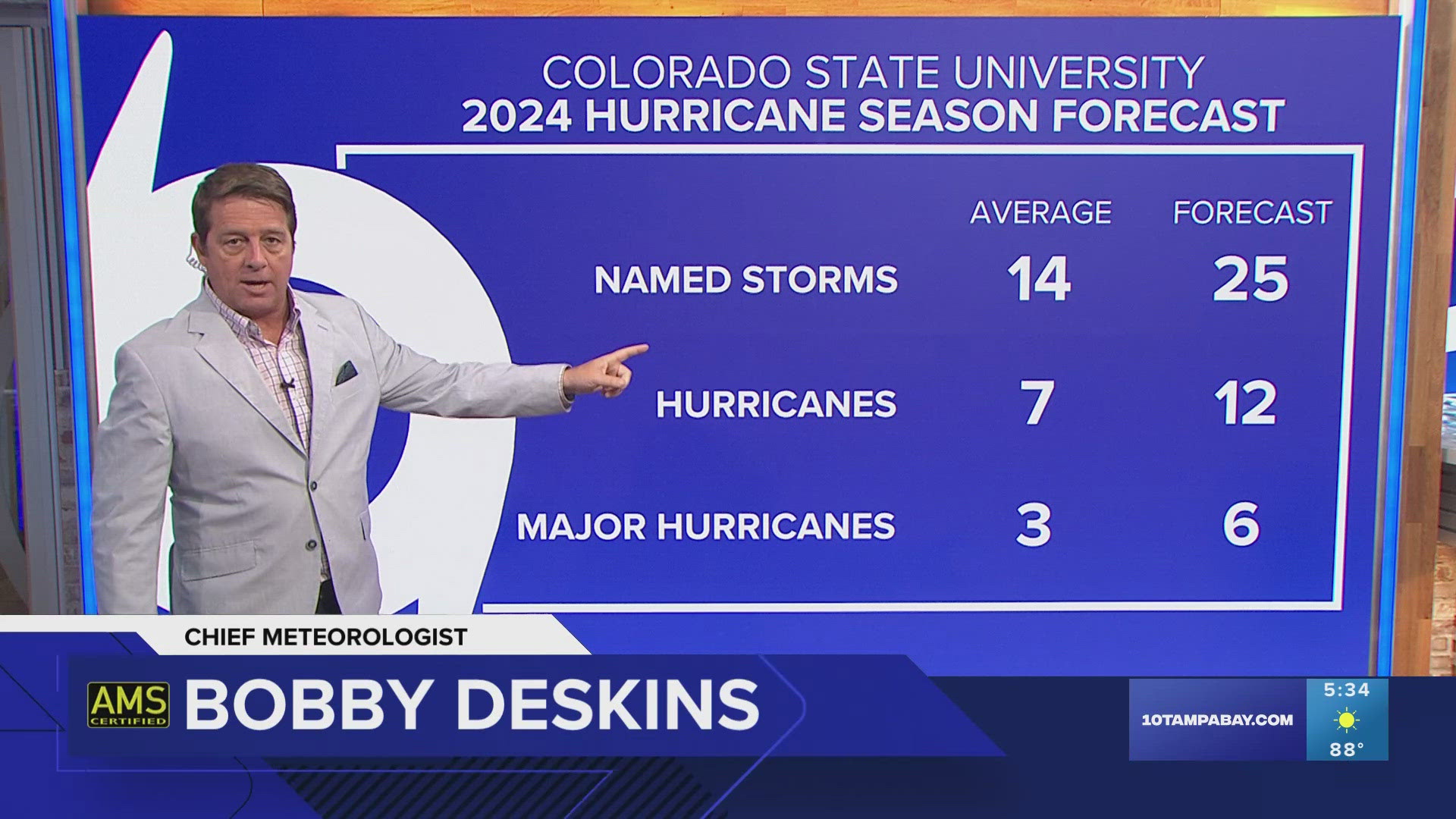ST. PETERSBURG, Fla. — Researchers at Colorado State University (CSU) updated their hurricane forecast to include more named storms and hurricanes for this year's Atlantic hurricane season.
Their initial outlook called for 23 named storms and 11 hurricanes with five of those becoming major hurricanes. On Tuesday, they announced they are now predicting 25 named storms, which include Alberto, Beryl and Chris, with 12 hurricanes, six of which are forecasted to become major.
The initial forecast was already above average since the Atlantic season usually generates about 14 named storms, with seven hurricanes and three of those reaching Category 3 or higher.


Meteorologist at CSU Philip Klotzbach said it will be "an extremely active 2023 Atlantic hurricane season," in an X post.
Klotzbach said most of the North Atlantic remains much warmer than normal, which favors hurricane activity. Another factor contributing to an active season is a significant potential for La Nina development, which decreases Caribbean and tropical Atlantic vertical wind shear, increasing activity.
In the outlook, researchers said early season Atlantic hurricane activity has little correlation with overall Atlantic hurricane activity, referring to Hurricane Beryl. But, they said it was an "extremely impressive hurricane."
All seasons since 1900 with a hurricane in the tropical Atlantic prior to Aug. 1 were classified as above-normal seasons using NOAA’s ACE definition. ACE stands for accumulated cyclone energy and for it to be an above-normal season the score has to be more than 126.1 ACE.
"One of the main reasons we increased our ACE forecast for the full 2024 season was due to Hurricane Beryl having already generated ~35 ACE by itself," researchers wrote in their findings.
CSU researchers will be issuing a final seasonal update on Aug. 6.

